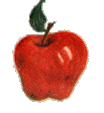Historical Mabon
Mabon, the second of the great harvest festivals, is celebrated at the Autumnal Equinox (between September 21-September 25). The Wheel has turned and for this single day the hours of daylight and darkness are once again equal. The air is cooler and the harvest of fruits and vegetables means that we are busy canning, pickling, drying and bottling the bounties of orchard and garden.
In modern times, September often means that children are returning to school. Life seems to slow down. This is often a time of reflection and re-establishment of routines that may have slipped during the heat of the summer. We pull out the boxes of winter clothing and realize how much our children have grown when clothing that fit them just a few months ago is far too short and tight.
Mabon is the Welsh name for a Celtic god who was stolen from his mother three days after his birth and locked away till he was a man. His name was Mabon, son of Modron, which translated means "Son, son of the Mother". Mabon was also known as the Son of Light. He was the god of liberation, harmony, music and unity.
The story has very ancient origins and much of it has been lost. The version which has come down to us tells of, Kyllwch, one of King Arthur's knights, finding and freeing Mabon as a step toward fulfilling one of the conditions for his betrothal to the fair Olwen. Through the intervention of the Stag, Blackbird, Owl, Eagle and Salmon -- the ancient Celtic symbols of wisdom-- Mabon is freed from his mysterious captivity and Kyllwch wins Olwen.
 Mabon marks the end of the corn harvest which started with Lughnasadh.
It is the time of the apple harvest. For our ancestors, apples were the
fruit that sustained them through the winter. Apples themselves and the
cider which was pressed from them were an important part of the diet. (Click on the Apple for examples of Apple Lore.)
Mabon marks the end of the corn harvest which started with Lughnasadh.
It is the time of the apple harvest. For our ancestors, apples were the
fruit that sustained them through the winter. Apples themselves and the
cider which was pressed from them were an important part of the diet. (Click on the Apple for examples of Apple Lore.)
Here are some suggestions for celebrating
Mabon with
your family:
Any of the activities listed for Lughnasadh or Samhain would also be
appropriate for Mabon.